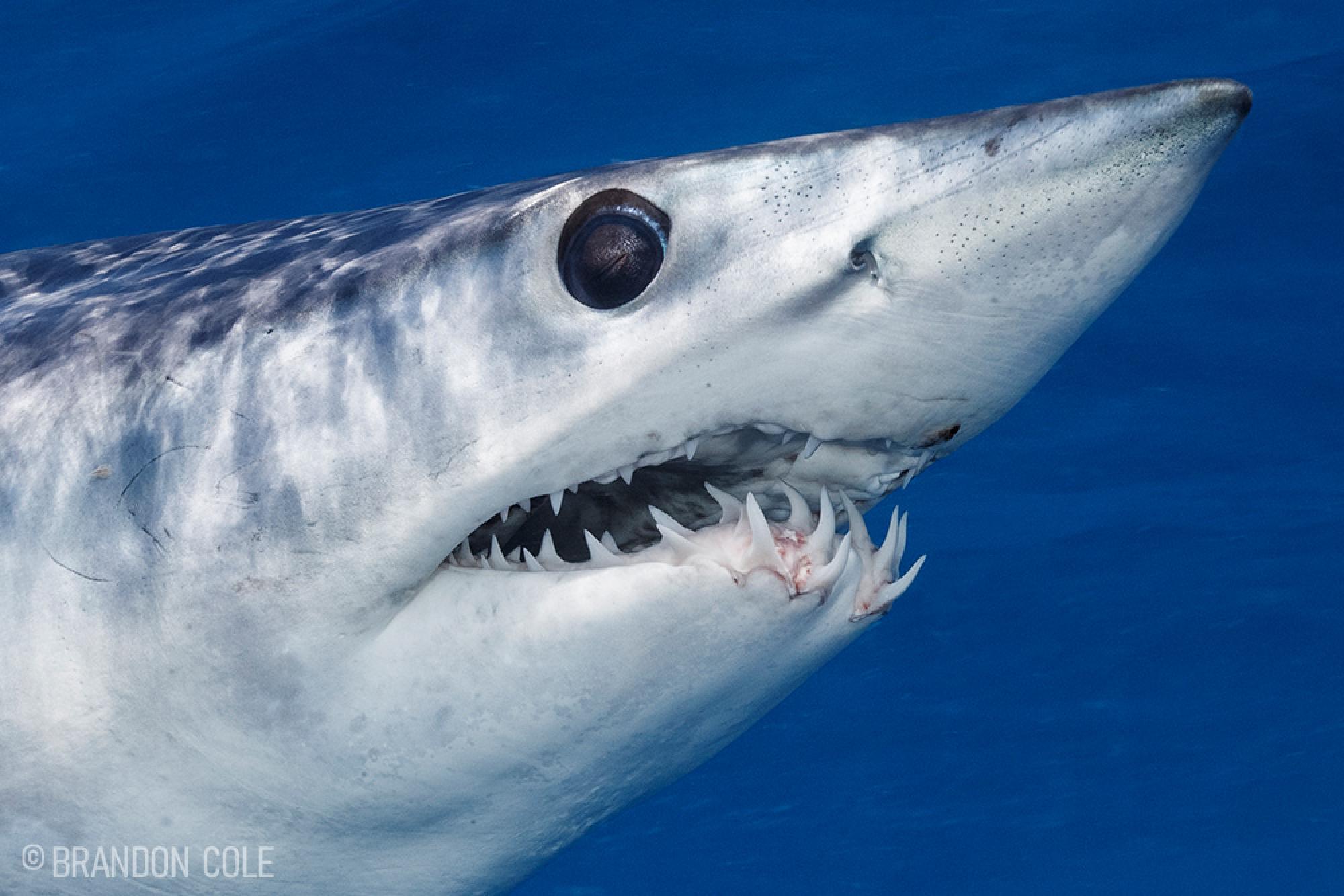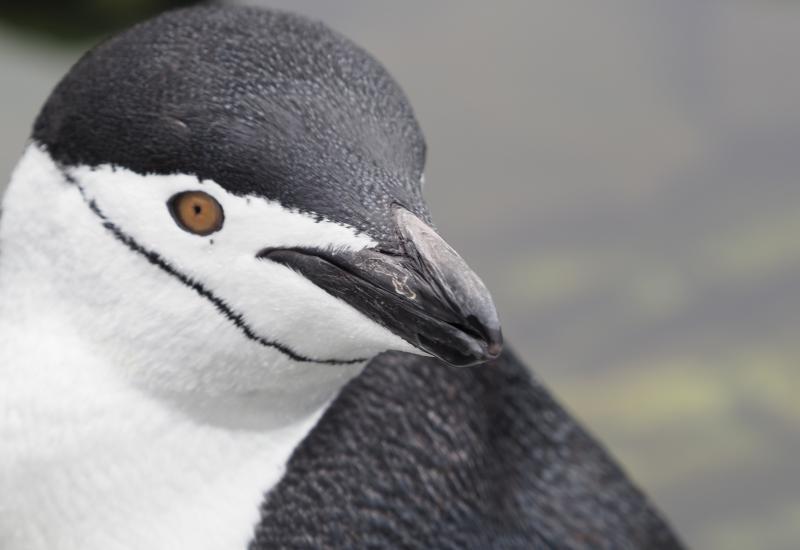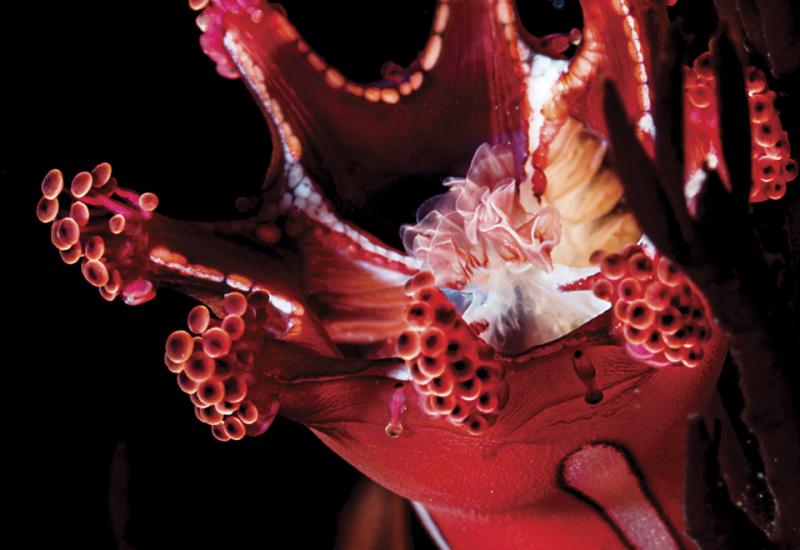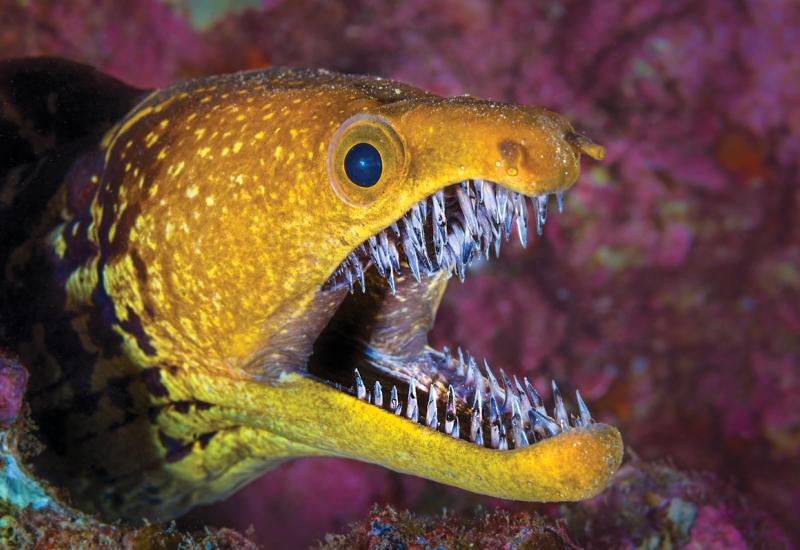Cabo’s Other Wild Side: Swimming with Blue and Mako Sharks
Seeking sun and fun, millions make their way to Mexico’s Cabo San Lucas each year, to beach bum, feast on tacos and tequila and splurge on packaged vacations within the sanitized confines of all-inclusive resorts. Having visited Cabo dozens of times, beginning with a camping trip with my dad in the ‘80s when I was a teenager, I’ve seen it change dramatically. Boom! The once sleepy, dusty, desert village at the bottom of the Baja peninsula has exploded into a tourism powerhouse.
I never expected Cabo would also develop into a world-class destination for encountering sharks. Landlubbers don’t know what they’re missing. If they were but to wander away from the bars and timeshare condos, head due south just a few miles past Land’s End and give themselves over the Pacific’s briny embrace, those holidaymakers would find another (better) reason to celebrate Cabo—sharks, and lots of them.
Meet and Greet the Neighbors
“Shark on the bait!”
We had been waiting 90 minutes when the hoped-for words broke through our easy, random chatter and set us scrambling—donning suits, grabbing masks, snorkels and fins and executing final checks to camera rigs. After looking to make sure no teeth are waiting directly below, we slide over the boat’s edge. A wave breaks overtop me, filling my snorkel, but no matter, I’m already breathless.
A mako shark, about 5 feet long, charges through the blue in front of me to lunge at the bait on the line. The crewman onboard teases the bait away just in time. The shark banks hard, and, denied and defiant, turns to investigate me. Perfect. I’ve waited a lot longer than 90 minutes—years in fact—for this exact moment. I focus and fire, spray and pray, as the mako rockets in like a missile of muscle and metallic skin. One of these frames, though representing just a split second in time, will end up frozen in my mind’s eye for years to come, I’m thinking. What a way to start the trip!
Related Reading: Into the Frenzy: Diving Baja's Mobula Ray Aggregations
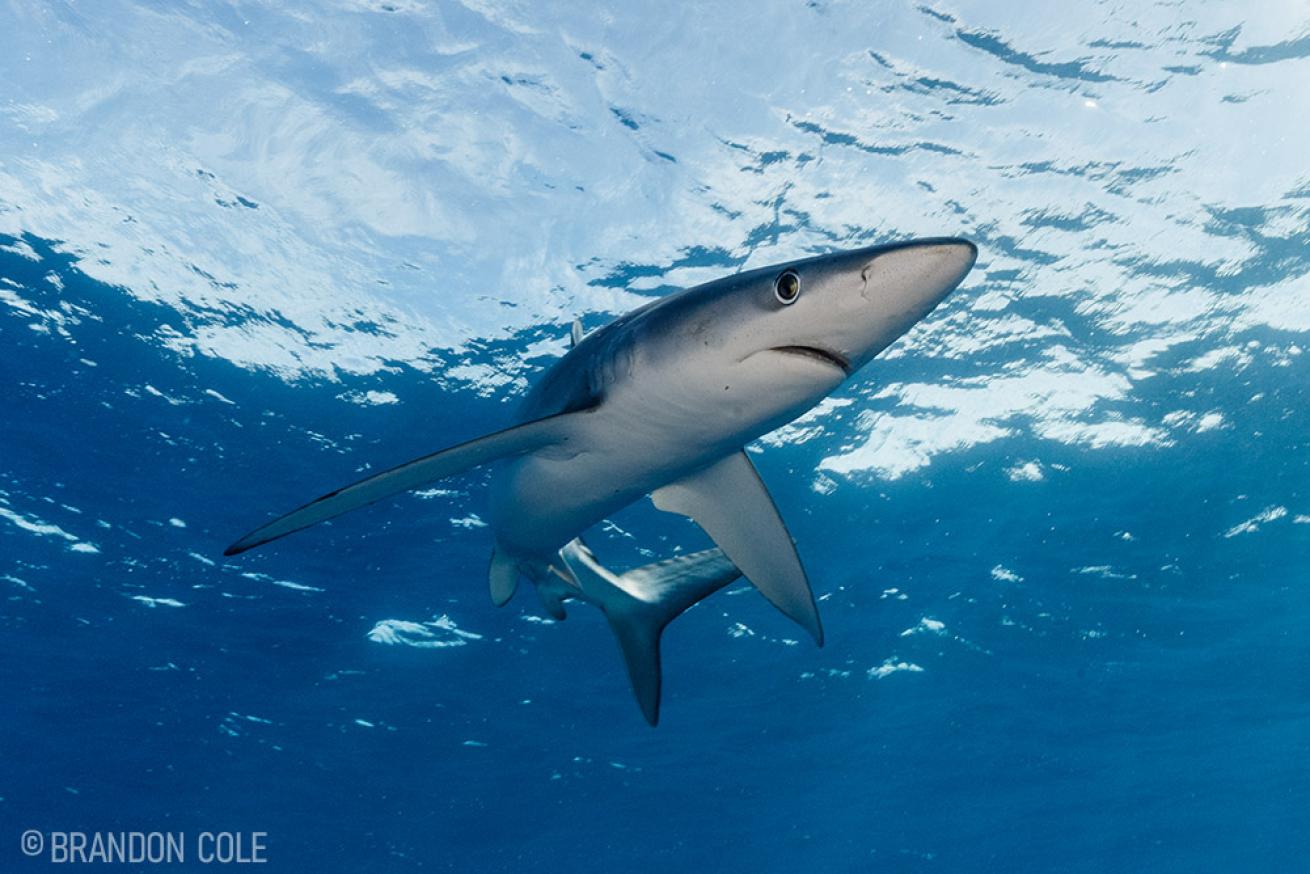
Brandon ColeA blue shark (Prionace glauca) glides through the open sea. A requiem shark that gives birth to multiple (4-135) pups per litter after a 9-12 month-long gestation period. Most shark species are slow to reach sexual maturity, which adds to their vulnerability to overfishing. Male blues mature at 6 to 9 feet in length, and females at about 7 feet long. Lifespan is approximately 20 years.
Blues arrive on the scene a bit later. I’m fascinated by the contrast between the two species. Compared to the mako’s twitchy, electric movements and its seemingly dead eyes and soulless smile out of a slasher movie, blue sharks are all serpentine grace, lazily gliding on the sea winds. Their eyes are shaped more like a cat’s, though silvery with cerulean and golden flecks catching the light, I observe, when one pauses inches in front of my camera. Their teeth go mostly unnoticed underneath the almost comically big nose, whereas mako dentition is permanently on display front and center, recurved daggers bristling from gaping maw. Both predators are perfect in their own way, evolutionarily fine-tuned over hundreds of millions of years to their lives at sea. I’m beyond thrilled to make their acquaintance.
Pelagic Magic
An underwater canyon yawns upward from 10,000 feet beneath our fin tips. There’s undoubtedly some secret sauce swirling around us, the right ingredients in the right amounts in the right place, all blending together to make these very sharky waters. Scientists are still figuring out why. We’re here in March, when makos and blues are frequently seen. Based on tagging studies, researchers believe that these sharks are wanderers, not residents. Our operator tells us that silky sharks will be the next main attraction, usually starting in May. Smooth hammerheads will occasionally show up when the water warms up more, and there’s always a chance for other exciting sightings. We spot a turtle, striped marlin and even mother and calf humpback whales while traveling from party town to shark zone and back. These and other bonus prizes await those venturing offshore.
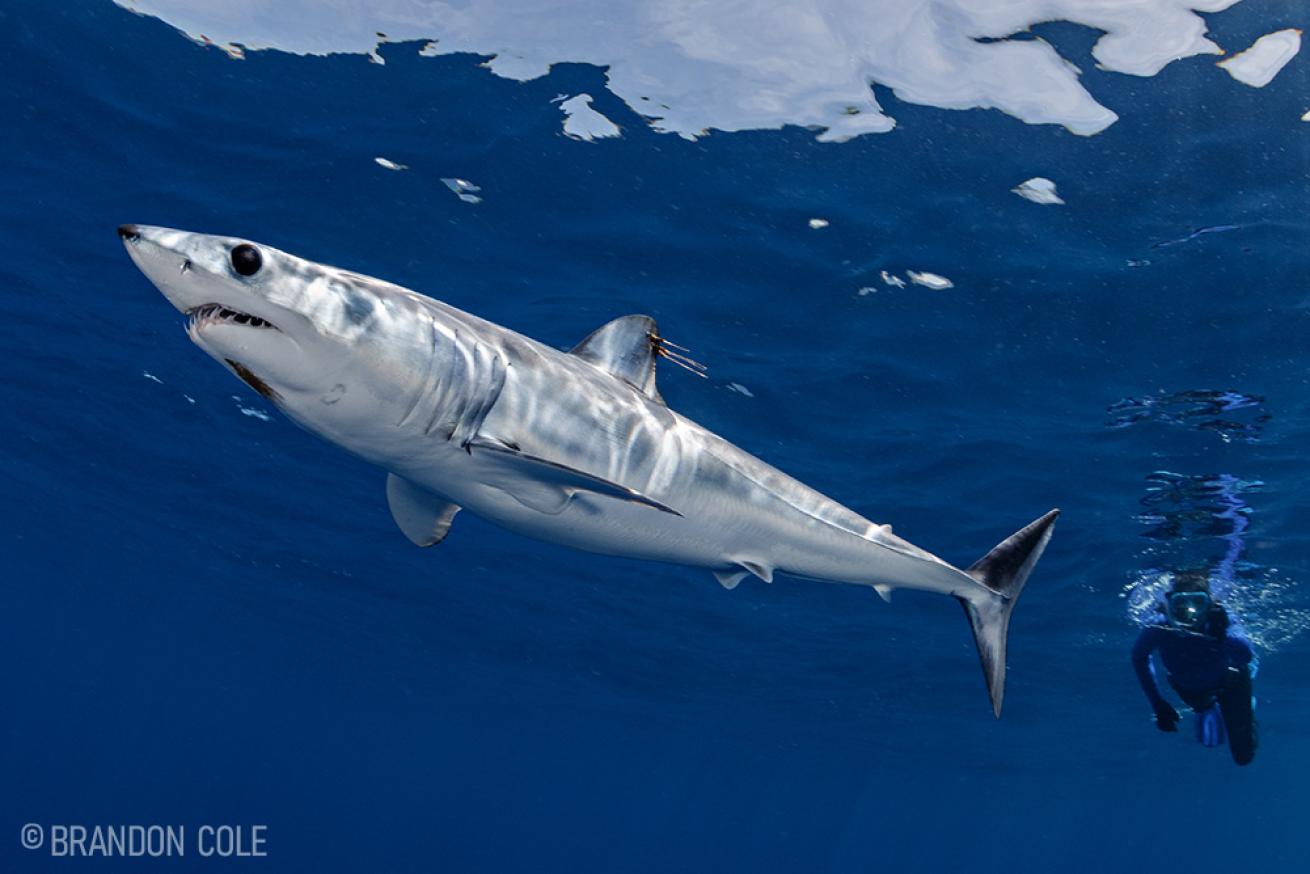
Brandon ColeA woman snorkels with a small shortfin mako shark (Isurus oxyrinchus), a species which grows to over 12 feet long and weighs over 1,200 pounds. As the fastest swimming species of shark, makos are capable of short bursts of speed up to 46 miles per hour and can leap high out of water.
There are also hours of boredom while waiting. Shark diving, or in this case, shark snorkeling, is often thus. With dogged determination, we persist, and over the next few days we experience many, many hours of unbridled elation up close and personal with spectacular sharks. The crew’s experience in reading sea conditions and deploying the chum attractant, plus a little luck thrown our way from Señor Poseidon, contribute to our success. We encounter maybe eight different makos in total, each Isurus oxyrinchus distinguishing itself from its kin by its length and girth, unique markings, copepod patches and behavior. We log some 25 different blue sharks. One day finds seven weaving around us at the same time.
Two specific individuals that prove rock stars for the cameras are a spunky, 2-foot-long mako who is all attitude and fearlessly, repeatedly approaches each of us in turn, even acting so boldly as to chew on a few GoPros; and an inquisitive blue shark as long as I am tall (with my long fins extended) that had two pilotfish riding shotgun under its chin and alongside its svelte flanks. This beautiful Prionace glauca commanded our collective attention.
Some sharks hang around for only a few moments; others take a real liking to the tantalizing smell wafting from the chum slick and bait crate and remain in our company for hours. Being completely waterlogged and having too many pictures to download are wonderful excuses to skip bar crawling at night. Instead, we will go sharking again early and eager come the new day, immersing ourselves in Cabo’s real wild adventure.
Related Reading: An Unforgettable Dive: Learning What It Takes to Get “the Shot” of a Great White Shark
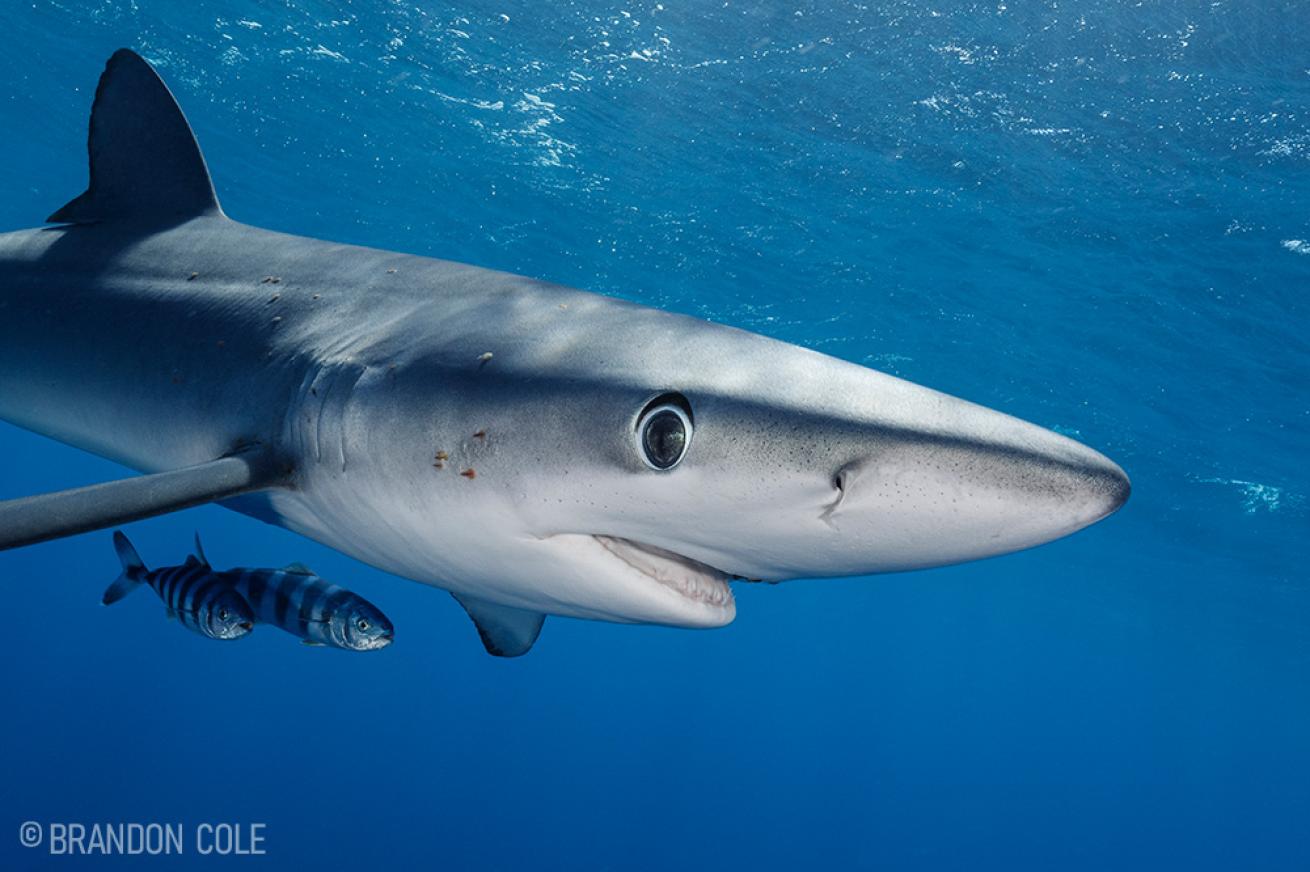
Brandon ColeA blue shark (Prionace glauca) glides through the open sea just under the surface. Though potentially dangerous to people, many scuba divers enjoy safe encounters with this requiem shark. Note the two pilotfish (Naucrates ductor). Pilotfish are semi-obligate commensal symbionts, following sharks, turtles and other pelagic animals. They feed on leftovers from their host meals, as well as parasites and excrement.
Behind the Shot
I used my Canon 5D mark IV DSLR in a Nauticam housing with 230mm dome port and two lenses, the 8-15mm f4 fisheye and the 16-35mm f4 rectilinear zoom. (If shooting APS-C format, I’d recommend the Tokina 10-17.) For mirrorless cameras, use lenses with angle of coverage similar to the above three.) Even though these sharks are not huge whale sharks, they often approach very close, so a fisheye lens can be very handy at times. I used Ikelite DS161 strobes in manual mode, often dialed down -2 or even -3 stops, for fill flash. Their fast recycle time helps when firing off a burst. Snorkeling with a big camera and big strobes isn’t the easiest if you’re new to snorkeling in often choppy seas, so don’t be afraid to ditch the strobes if necessary. Because most of the action is happening right at the surface, ambient light is sufficient and provides decent color. Try to keep the sun behind your back. Use fast shutter speeds such as 1/160 to 1/320 (as fast as your camera syncs) with strobes, and 1/250 to 1/500 without, to help freeze the action.
For no-brain-required easy video, I used a GoPro 10 at 4k 60fps, on wide view, without filters.
Water temperature in March was 71 degrees Fahrenheit, but the wind can chill you. I used a 5mm full suit and hooded vest, allowing me to spend hours in the water. I also used a black skirted mask (improves camera viewing), dry snorkel and freediving fins.

